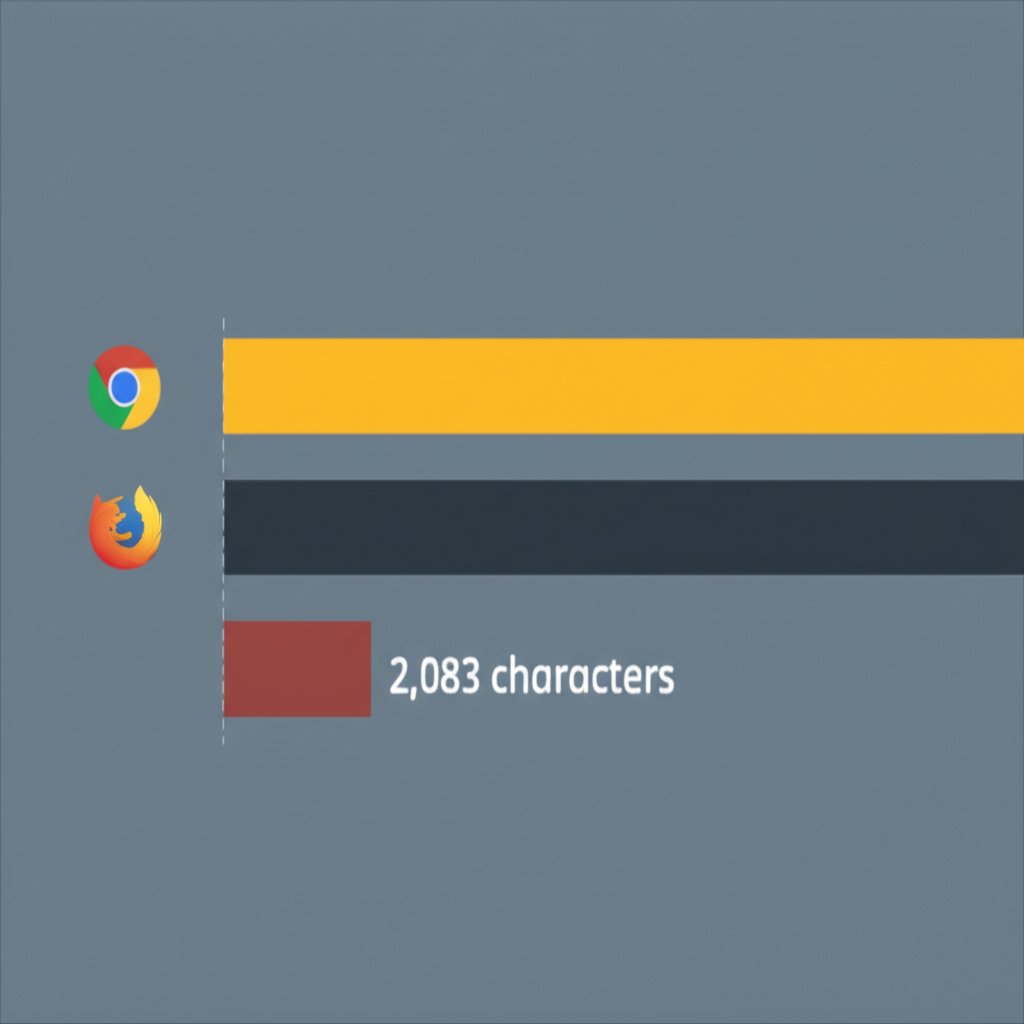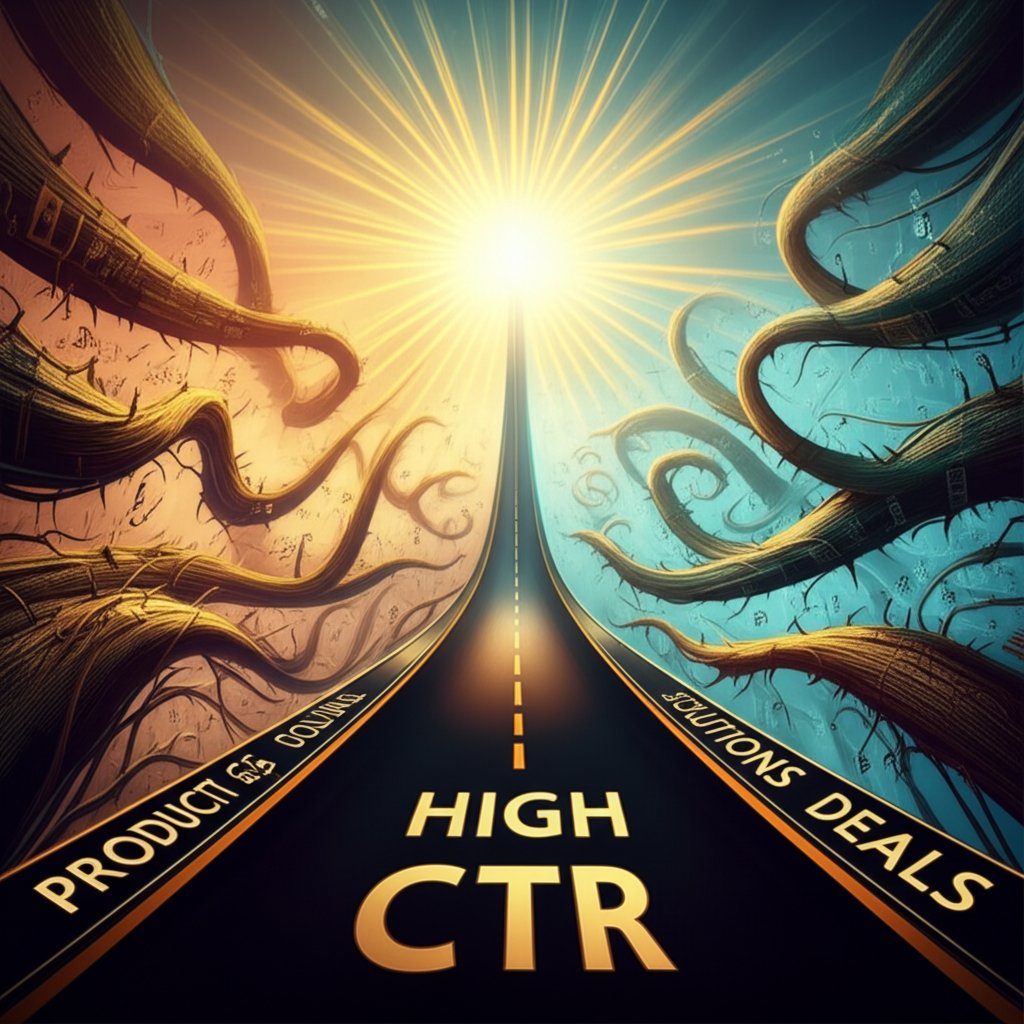TL;DR
While no single official standard dictates a maximum URL length, a de facto limit of around 2,000 characters is widely accepted to ensure maximum compatibility across all browsers, clients, and servers. This practical limit originates from older browsers like Internet Explorer. However, for search engine optimization (SEO) and user experience, the best practice is to create much shorter, descriptive URLs, ideally under 75 characters.
Understanding URL Length: The 'Safe' Limit vs. Technical Maximums
The question of URL character limits isn't straightforward because there is no universal specification defined in the official HTTP standards. The original RFC 2616 simply stated that servers should be able to handle URIs of unbounded length. However, practical application and the limitations of various software components have created a different reality. This has led to the establishment of a 'safe' or de facto limit that developers and SEO professionals should respect to avoid compatibility issues.
This widely cited safe limit is approximately 2,000 characters. If you keep URLs under this length, they will function correctly in virtually any combination of client and server software. This guideline is crucial for ensuring that your links are accessible to the widest possible audience, regardless of the technology they use. Exceeding this can lead to a "URL too long" error, preventing users from accessing your content.
The origin of this specific number can be traced back to legacy software, most notably Microsoft Internet Explorer. As detailed in Microsoft's official documentation, Internet Explorer has a maximum URL length of precisely 2,083 characters, with a path limit of 2,048 characters. Because of the browser's historical market dominance, this limitation became the lowest common denominator that web developers had to accommodate, cementing the ~2,000 character rule as a durable best practice.
While most modern browsers can handle much longer URLs, this safe limit remains relevant. Server software, proxy servers, and even some content delivery networks (CDNs) may impose their own, more restrictive limits. For instance, the sitemaps protocol used to inform search engines about your pages has a hard limit of 2,048 characters. Therefore, adhering to the ~2,000 character guideline is the most reliable strategy to prevent unforeseen errors and ensure universal accessibility.

Browser-Specific URL Character Limits: A Detailed Comparison
While the ~2,000 character rule is a vital guideline for compatibility, the actual technical capabilities of modern web browsers are far greater. Most contemporary browsers can process extremely long URLs, often with limits determined by available memory rather than a hard-coded constraint. However, these theoretical maximums are rarely, if ever, a practical consideration in standard web development compared to SEO and server-side factors.
Understanding these differences is useful for edge cases and technical diagnostics. For instance, developers working with complex client-side applications that encode large amounts of data into the URL might approach these limits. It's important to note that even if a browser can handle an exceptionally long URL, the server it's communicating with might not.
Here is a detailed comparison of the maximum URL character limits for major web browsers, based on various tests and documentation:
| Browser | Maximum URL Length (Approximate Characters) |
|---|---|
| Google Chrome | ~32,767 characters (though some sources state 2MB) |
| Mozilla Firefox | ~65,536 characters |
| Safari | ~80,000 characters |
| Microsoft Edge | 2,083 characters (maintaining legacy compatibility) |
| Internet Explorer | 2,083 characters (the source of the de facto limit) |
The data clearly shows that the primary constraints are not from modern browsers like Chrome, Firefox, or Safari, which can handle tens of thousands of characters. The main bottleneck remains legacy systems and the need for universal server compatibility. Therefore, while it's technically possible to create very long URLs, it's rarely advisable. The focus for developers and marketers should instead be on creating efficient, readable, and SEO-friendly URLs.
The SEO Perspective: Why Shorter Is Better for URL Length
From an SEO and usability standpoint, the technical maximums of browsers are largely irrelevant. The most effective URLs are short, descriptive, and easy for both users and search engines to understand. While search engines can crawl long URLs, excessively lengthy ones can negatively impact click-through rates, shareability, and overall user trust. Best practices, as highlighted by resources like Serpstat, suggest an ideal length of under 75 characters.
When a URL is too long, it gets truncated in the search engine results pages (SERPs), often replaced with an ellipsis (...). This can hide important keywords and make the link look messy or untrustworthy, potentially deterring users from clicking. A concise URL, on the other hand, is fully visible, easier to read, copy, and share on social media or in emails without breaking. It acts as its own anchor text, giving users a clear idea of the page's content before they even click.
Creating optimized URLs is a core part of on-page SEO. For teams looking to scale their content production while maintaining high standards, tools can be invaluable. Marketers and creators can revolutionize their content workflow with platforms like BlogSpark, an AI blog post generator that helps create engaging, SEO-optimized articles, including well-structured URLs, in seconds.
To create effective, SEO-friendly URLs, follow these actionable best practices:
- Be Descriptive: The URL should accurately reflect the content of the page.
- Include Keywords: Use your primary keyword near the beginning of the URL path.
- Use Hyphens: Separate words with hyphens (-), not underscores (_) or spaces. Hyphens are treated as word separators by search engines.
- Keep it Concise: Remove unnecessary stop words (like 'a', 'an', 'the') and parameters.
- Use Lowercase: Stick to lowercase letters to avoid potential duplicate content issues on case-sensitive servers.
- Avoid Complex Structures: A flat URL structure is often better than one with many nested subdirectories.
Beyond the Browser: Server-Side and API URL Considerations
The final piece of the URL length puzzle lies beyond the user's browser, on the server itself. Web servers like Apache and Nginx, as well as API gateways and web application frameworks, all have their own configurable limits on the length of a URL they will process. These server-side limits are often more restrictive than modern browser limits and can be a common source of "414 Request-URI Too Long" errors for developers.
This is particularly critical when dealing with HTTP GET requests. In a GET request, all data is passed directly in the URL as query parameters (the part after the '?'). If a web application sends a large amount of data this way—such as complex filtering options, long search queries, or tracking parameters—it can easily exceed the server's configured limit. For example, discussions on Stack Overflow frequently highlight how server configurations are a primary bottleneck.
In contrast, the POST method sends data within the body of the HTTP request, not in the URL. This means it is not subject to URL length limitations and is the preferred method for submitting forms or sending large or complex datasets to a server. Understanding when to use GET versus POST is fundamental for robust web application development.
For developers, the practical advice is clear. First, always check the documentation for your specific web server, framework, and any intermediary services like CDNs or load balancers to understand their default limits (e.g., Apache's `LimitRequestLine` directive). Second, when designing APIs or web forms, use the POST method for any data submission that could potentially be large or contain sensitive information. Finally, design your API resource identifiers and query parameters to be as concise as possible to avoid hitting these limits unexpectedly.

Frequently Asked Questions About URL Length
1. What is the URL length issue?
The URL length issue refers to the problem where a URL exceeds the character limit supported by a browser, server, or other web technology. This most commonly results in a "414 Request-URI Too Long" error, preventing the page from loading. The practical limit for universal compatibility is around 2,000 characters.
2. How long should a URL be?
For optimal SEO and user experience, a URL should be as short and descriptive as possible, ideally under 75 characters. This ensures it is fully visible in search results, easy to share, and simple for users to read and understand.
3. How long can a URL be in Chrome?
Google Chrome can technically handle very long URLs, with a maximum length of approximately 32,767 characters (or up to 2MB). However, this theoretical limit is rarely relevant in practice due to server-side and SEO constraints.
4. What happens if the URL is too long?
If a URL is too long, it can cause several problems. It may be rejected by the web server, leading to an error page. In search results, it will be truncated, which can look untrustworthy and lower the click-through rate. Excessively long URLs are also difficult for users to share and can negatively impact the overall user experience.




